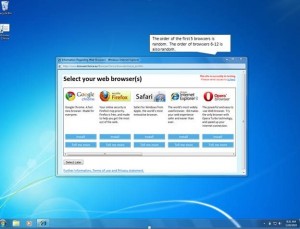News articles
Getting a Windows PC to boot in under 10 seconds | Nanotech – The Circuits Blog (CNET News)
BBC News – Change to ‘Bios’ will make for PCs that boot in seconds
My comments
The PC BIOS legacy
The PC BIOS which was the functional bridge between the time you turn a personal computer on and when the operating system can be booted was defined in 1979 when personal computers of reasonable sophistication came on the scene. At that time the best peripheral mix for a personal computer was a “green-screen” text display, two to four floppy disk drives, a dot-matrix printer and a keyboard. Rudimentary computers at that time used a cassette recorder rather than the floppy-disk drives as their secondary storage.
Through the 1980s, there was Improved BIOS support for integrated colour graphics chipsets and the ability to address hard disks. In the 1990s, there were some newer changes such as support for networks, mice, higher graphics and alternate storage types but the BIOS wasn’t improved for these newer needs. In some cases, the computer had to have extra “sidecar” ROM chips installed on VGA cards or network cards to permit support for VGA graphics or booting from the network. Similarly, interface cards like SCSI cards or add-on IDE cards couldn’t support “boot disks” unless they had specific “sidecar” ROM chips to tell the BIOS that there were “boot disks” on these cards.
These BIOS setups were only able to boot to one operating environment or, in some cases, could boot to an alternative operating environment such as a BASIC interpreter that used a cassette recorder as secondary storage. If a user wanted to work with a choice of operating environments, the computer had to boot to a multi-choice “bootloader” program which was a miniature operating system in itself and presented a menu of operating environments to boot into. This was extended to lightweight Web browsers, email clients and media players that are used in some of the newer laptops for “there-and-then” computing tasks.
The needs of a current computer, with its newer peripheral types and connection methods, were too demanding on this old code and typically required that the computer take a significant amount of time from switch-on to when the operating system could start. In some cases, there were reliability problems as the BIOS had to get used to existing peripheral types being connected to newer connection methods, such as use of Bluetooth wireless keyboards or keyboards that connect via the USB bus.
The Universal Extensible Firmware Interface improvement
This is a new improvement that will replace the BIOS as the bootstrap software that runs just after you turn on the computer in order to start the operating system. The way this aspect of a computer’s operation is designed has been radically improved with the software being programmed in C rather than machine language.
Optimised for today’s computers rather than yesterday’s computers
All of the computer’s peripherals are identified by function rather than by where they are connected. This will allow for console devices such as the keyboard and the mouse to work properly if they are connected via a link like the USB bus or wireless connectivity. It also allows for different scenarios like “headless” boxes which are managed by a Web front, Remote Desktop Protocol session or similar network-driven remote-management setup. That ability has appealed to businesses who have large racks of servers in a “data room” or wiring closet and the IT staff want to manage these servers from their desk or their home network.
Another, yet more obvious benefit is for computer devices to have a quicker boot time because the new functions that UEFI allows for and that the UEFI code is optimised for today’s computer device rather than the 1979-81-era computer devices. It is also designed to work with future connection methods and peripheral types which means that there won’t be a need for “sidecar” BIOS or bootstrap chips on interface cards.
Other operational advantages
There is support in the UEFI standard for the bootstrap firmware to provide a multi-boot setup for systems that have multiple operating environments thus avoiding the need to provide a “bootloader” menu program on the boot disk to allow the user to select the operating environment. It will also yield the same improvements for those computers that allow the user to boot to a lightweight task-specific operating environment.
When will this be available
This technology has been implemented in some newer laptops and a lot of business-class servers but from 2011 onwards, it will become available in most desktop and laptop computers that appeal to home users and small-business operators. People who have their computers built by an independent reseller or build their own PCs will be likely to have this function integrated in motherboards released from this model year onwards.

